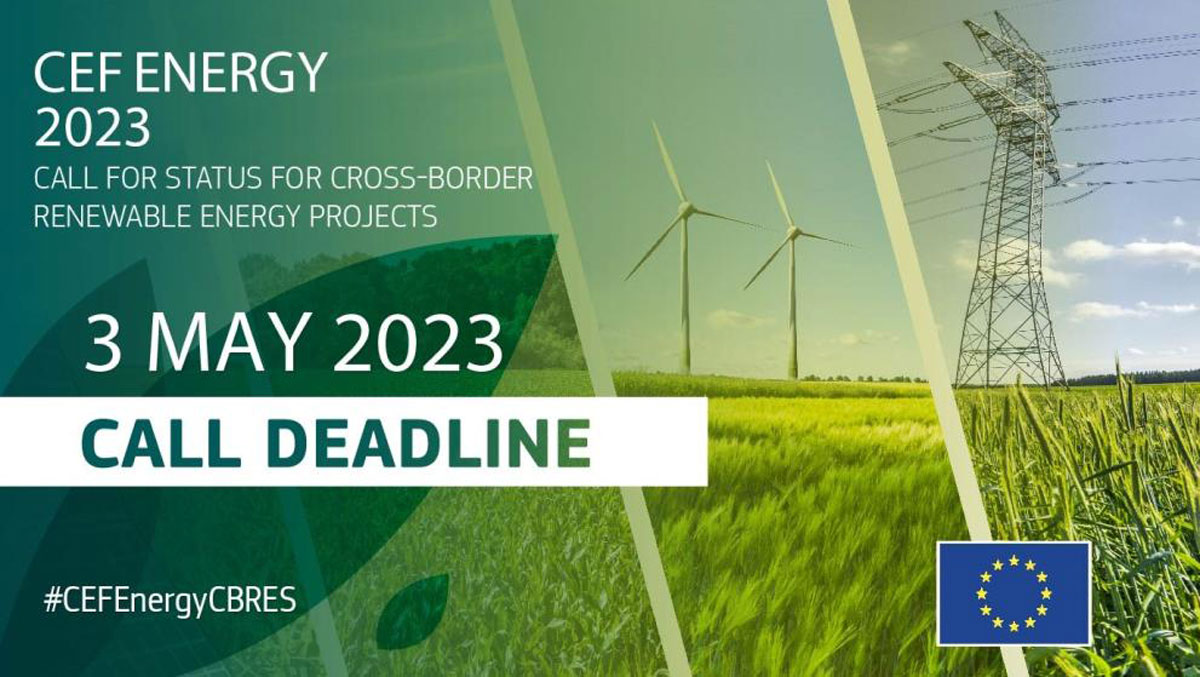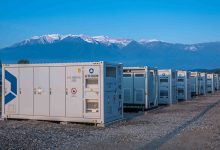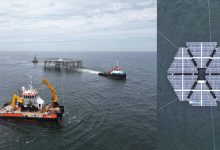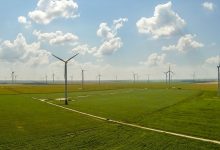New Call for CB RES to Obtain the Status
The Connecting Europe Facility (CEF) Energy programme for the 2021-2027 period was extended with a cross-border renewable energy (CB RES) window. The scope of the CB RES programme covers renewable energy projects that involve a physical or non-physical cross-border cooperation between EU Members States, but also Member States and non-EU countries.
The programme aims to provide financial support to meet EU decarbonisation targets by optimising national efforts for deployment of renewable energy and thus increase the security of energy supply.
Following the calls for proposals to support preparatory studies for that type of projects, the European Commission and CINEA are now launching the second call to obtain the status of cross-border renewable energy projects (CB RES status) and therefore enter a list of projects eligible for CEF funding (CB RES list). CINEA launched the same call in 2022 and three projects made it to the CB RES list and received the status.
This call is particularly important because having the official CB RES status is a requirement to be eligible for financial support for studies and works under the CEF Energy Programme. Obtaining the CB RES status can provide further benefits such as higher visibility, increased investor certainty, and stronger support from EU countries.
The call also covers projects facilitating renewable energy sources integration through energy storage facilities and which contribute both to the strategic uptake of innovative renewables technologies and to the EU’s long term decarbonisation strategy.
Promoters of candidate projects for the CB RES status can participate in the call by submitting an application via the dedicated CB RES submission platform by 3 May 2023.
What is a cross-border project in the field of renewable energy?
In order to meet the EU decarbonisation targets, the EU Member States committed to collectively achieve a share of renewable energy in the EU’s final energy consumption by 2030. This share should reach 45% according to the latest proposal by the Commission under the REPowerEU action plan from May 2022. The EU reported a 22.1% share of renewable energy across the Union in 2020 and further scale-up of renewable energy generation capacity is crucial to meet both the decarbonisation objectives and the phase out of dependency on Russian fossil fuels. To do so, apart from purely domestic actions, each Member State may choose to cooperate with other countries within the EU or beyond. Such cooperation mechanisms, as set up in the Renewable Energy Directive (RED II), can take the form of joint projects, joint support schemes, or statistical transfers.
The new Connecting Europe Facility (CEF) programme provides an enabling framework of financial support to foster EU Member State cooperation in the field of renewable energy and introduces the concept of cross-border projects in the field of renewable energy (CB RES project).
In order for a project based on cooperation between Member States to become a CB RES project and to benefit from the enabling framework of CEF, it should fulfil the criteria set out in Part IV of the Annex to the CEF Regulation. These criteria refer to the existence of cooperation arrangement, as well as cost savings and potential overall net benefits that the project would provide.
The Commission Delegated Regulation (EU) 2022/342 further specifies the selection criteria and selection process. The related Commission Staff Working SWD (2021) 429 provides with the methodology for assessing the contribution of a given CB RES project, and also the general criteria to elaborate the CB RES Cost Benefit Analysis.
What type of projects are expected?
A CB RES project shall have three fundamental characteristics:
- It must be based on a Cooperation mechanism as per Articles 8, 9, 11 and 13 of the RED II Directive.
- It must provide higher socio-economical net benefits, compared to a national project, which is confirmed through a cost-benefit analysis.
- Its main component must be a renewable energy generation installation.
First, a CB RES project shall be based on a Cooperation mechanism signed by two or more Member States (MS) or by Member State(s) and third Country(ies). When submitting the application, projects should submit either the signed Cooperation Agreement or the signed declarations from the participating MS expressing their support to the project and their willingness to sign a Cooperation Agreement.
Secondly, the CB RES project shall perform a cost-benefit analysis, which evaluates the potential overall benefits of cooperation that outweigh its costs, compared to a counterfactual, considering seven indicators, in line with the dedicated methodology (Commission Staff Working SWD (2021) 429.
Thirdly, a CB RES project shall contribute to the generation of renewable energy from technologies such as on- and offshore wind, solar energy, sustainable biomass, ocean energy, geothermal energy or combinations thereof, their connection to the grid and additional elements such as storage or conversion facilities.
All the RES technologies listed under article 2 of the RED II Directive are eligible.
It is worth noting that CB RES projects are not limited to the electricity sector and can cover other energy carriers and potential sectors coupling with, for example, heating and cooling, power-to-gas, storage, and transport. This list is non-exhaustive.
CB RES projects do not necessarily entail a physical link between the cooperating Member States and can be located on the territory of one or more of the Member States involved, provided that they comply with the general criteria of Part IV of the Annex to the CEF regulation.
What is the CB RES status?
Any project meeting the regulatory criteria explained above may obtain the status of cross-border renewable energy project (CB RES status) and therefore enter a list of projects eligible for CEF funding (CB RES list).
Having the official CB RES status is a requirement to be eligible for financial support under the CEF Programme, and it could provide further benefits such as higher visibility, increased investor certainty, and stronger support from Member States.
As specified in the Commission Delegated Regulation Search, the new CEF window complements other EU renewable energy funding opportunities, focusing specifically on cross-border cooperation to optimise national efforts for deployment of renewable energy.
All projects with the CB RES status are on a list of eligible projects (the CB RES list) and may therefore apply for dedicated calls for CEF grants for technical studies and works.
Being selected in the CB RES list does not guarantee CEF funding. Once part of a CB RES list, projects may participate to CEF CB RES calls for technical studies and works and apply for CEF funding.
How to apply?
The second call for projects looking to obtain the CB RES status is open from the 10 January 2023 and closes on the 03 May 2023 5 pm CET.
Promoters of candidate projects for the CB RES status can participate in the call by submitting an application via the dedicated CB RES submission platform.
Next steps
Once the call is closed, eligible projects will be assessed against the criteria set out in the CEF regulation and the Delegated Regulation.
The assessment will be based on a methodology described in the Commission staff working document.
CINEA supports the management of the assessment on behalf of the European Commission.
Candidate projects meeting the requirements of the CEF Regulation, its Delegated Regulation and the related Commission staff working document, will be proposed for award of the CB RES status, and therefore the inclusion on the CB RES List.
The CB RES list is expected to be adopted by the European Commission by autumn 2023 and published in the Official Journal in November 2023. It is also expected that the next available call for proposals under CEF Energy for CB RES eligible projects will open contextually with the entry into force of the new CB RES list.







